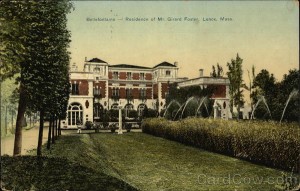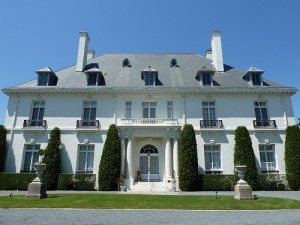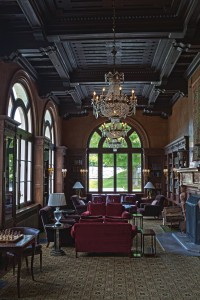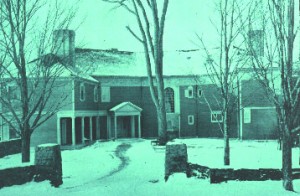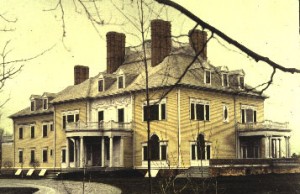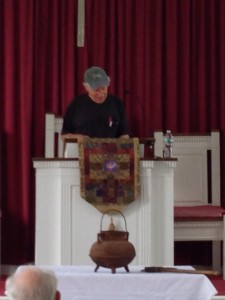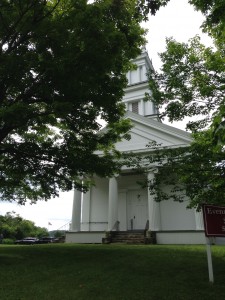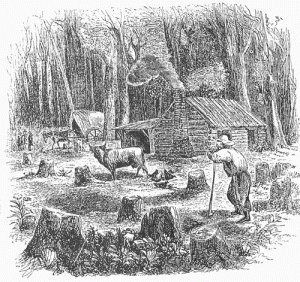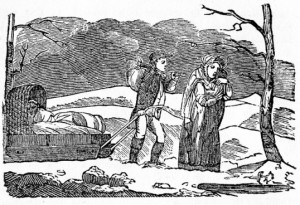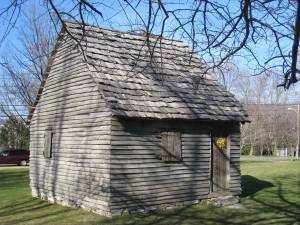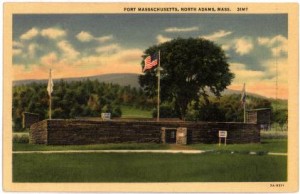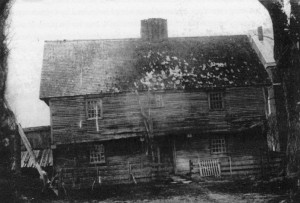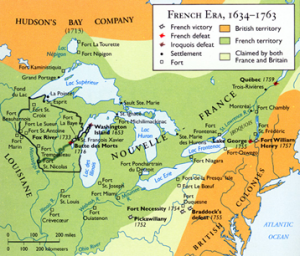Almost up to the time of the American Revolution, Lenox residents probably would have been satisfied that they could have the rights of self government to which they were accustomed and be loyal subjects of King George III.
However, from the end of the French and Indian Wars to the Revolution decision making at the local and colony level was -step by step – taken away. Eventually, the cumulative sense of loss of control over their own destinies moved even ordinary citizens to be willing to fight for a change in government.
Background – Colonial Government Structure
The governmental structure of Massachusetts had changed considerably since the early Puritan self-government compacts. By the 18th century Massachusetts, like many of the other colonies, had an appointed royal governor. That governor had the right to veto acts of the colony’s General Court, as did the king. The governor was the commander-in-chief of the militia and appointed all military officials; he had the right to summon and adjourn the General Court.
The rest of the government consisted of a 28 member Council selected by the House of Representatives and a House of Representatives consisting of Freemen (e.g. property owners) elected from towns across the colony.
The General Court appointed officers, passed laws and orders, organized all courts, established fines and punishments, and levied taxes, all with the consent of the governor. The House alone controlled the salaries of the governor and judicial officers.
The elected arms of the government had more power than this description of the charter suggests since they controlled appointments, land distribution, the salaries of the governor and judicial officers and could veto orders of the governor (although they rarely did).
In addition, as Englishmen, the colonists believed they had the right to pay only the taxes they had agreed to.

John Paterson was a representative from Lenox to the House of Representatives at the time of the Revolution.
Background – Local Government
The Puritans brought a history of local government with them from England. For 150 years Lenox and other towns carried on the tradition in at least three ways:
- Towns were initially organized like corporations and run by the proprietors (original purchasers – owners of major tracts of land)
- As the original proprietors sold off land, towns – such as Lenox – moved on to the town meeting form of government which we still use today
- Congregational management – the Congregational Church (the descendent of the original Puritan Church) was still supported by local taxes; the members of the local Church worked together to organize construction of a meeting house and calling a minister.

What Changed
As we have discussed, the end of the French and Indian War and the ascendency of King George III, touched off a flurry of attempts to bring North America more firmly into the imperial fold.
The economic impact of actions is discussed in the entry on Economic Causes of the Revolutionary War. However, the various actions taken by Parliament from the end of the French and Indian War to the Revolution, also had the effect of political clamp down.
First, there was the issue of enforcement. Prior to the 1760’s there had been duties on molasses and restrictions on who the colonists could trade with. However, with the help of a little bribery of customs officials, these duties and restrictions had not been strictly enforced. Beginning with a new Sugar Act in 1764 that changed and enforcement became confrontational with colonial merchant ships being stopped and searched. This became an even more visible interference with colonial prerogatives with the imposition of additional duties in the Townshend Acts of 1767.
Second, and more threatening, was the issue of taxation without representation. As far as the colonists were concerned the Stamp act of 1765 (which required payment for stamps for all nature of legal documents and other items) was a tax they had not agreed to. As a matter of fact the Virginia colonists, in March 1765, declared it illegal for “anybody outside of Virginia to assess taxes on Virginia.”
Finally, the “Intolerable Acts,” of 1774 (called the Coercive Acts in Parliament) directly stripped Massachusetts of its charter rights. Although the Stamp Act and most of the Townsend Act duties had been repealed, new King and the Parliament felt they had reached the end of their Royal patience when the colonists revolted against the Tea duties that remained. These “Intolerable Acts”
- Closed the Port of Boston until the East India Company was reimbursed for its tea
- Disallowed election of the upper house and made it a body appointed by the governor
- Eliminated the lower house’s veto power
- Made the governor or the King responsible for judicial and other appointments
- Gave the governor the authority to order trials involving royal officials to be held in England
- Prohibited any Massachusetts town meetings other than one annual town meeting.
And just for good measure, Parliament threw in
- the Quartering Act, requiring, as the name suggests, quartering of British soldiers in all colonies
- the Quebec Act enlarging the boundaries of what had been French Quebec and providing for more favorable treatment of French Catholics (particularly annoying to the formerly Puritan New Englanders who felt these were the people they had been fighting for almost 100 years.)
The “Intolerable Acts” were intended as a punishment for the Boston Tea Party in 1773. But instead of creating the desired obedience, these Acts touched off colonial unity in the form of the first Continental Congress, Committees of Correspondence, Non-importation agreements and general preparation for revolt.
See:
The Glorious Cause, The American Revolution 1763-1789, Robert Middlekauf, Oxford University Press, 1982
A People’s History of the American Revolution, How Common People Shaped the Fight for Independence, Ray Raphael, The New Press, 2001
The Marketplace of Revolution, How Consumer Politics Shaped American Independence, T.H. Breen, Oxford University Press 2004
The American People, Creating a Nation and a Society, Volume One: to 1877, Third Edition, Nash, Jeffrey, Howe, Frederick, Davis, and Winkler, Harper Collins College Publishers 1994
“The Intolerable Acts”, Wikipedia as of April 2014
Note: add info on 1766 Declaratory Act — no law that does not conform to laws passed by Parliament??



